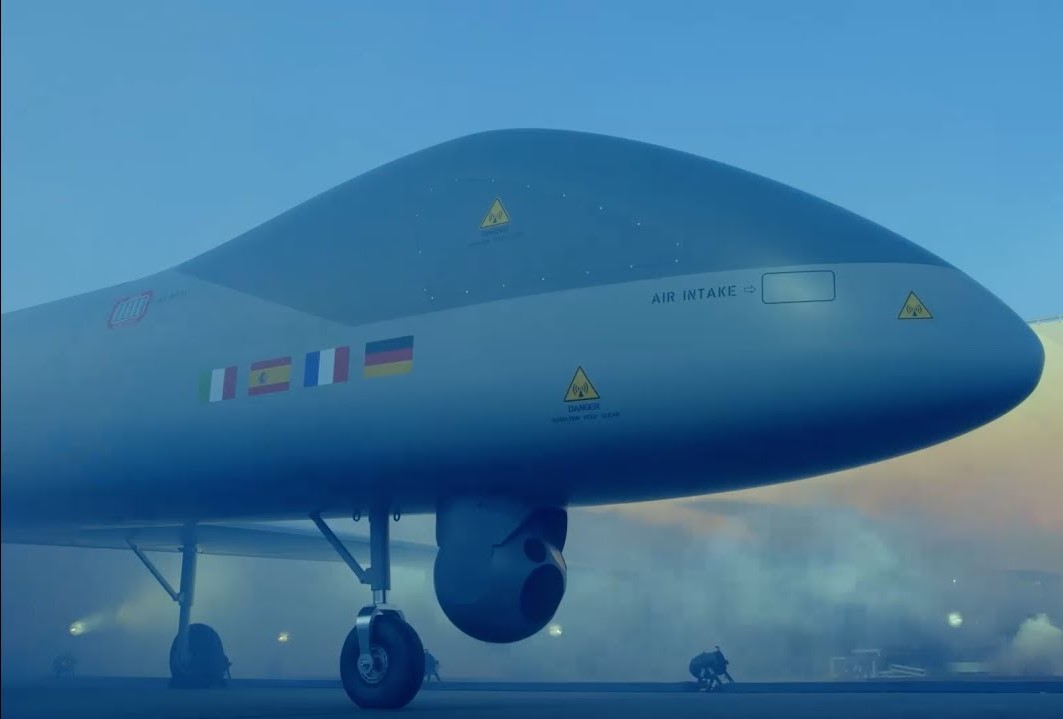Briefing on Armed Drones at the European Parliament

Though the European Parliament has long been aware of problematic use, development, and proliferation of armed drones, a host of new developments has necessitated an update on where we are. To inform both current and newly elected Members of the European Parliament, a lunch meeting was organised by the Greens/European Free Alliance on December 5th, 2019, to discuss recent developments and accompanying issues. At the meeting, Delina Goxho (Open Society Foundations), Foeke Postma (PAX), Tania Latici (EPRS) presented their research and recommendations, and took questions from attendees on the current and future use of armed drones.
The debate was hosted by Markéta Gregorová, member of the Czech Pirate Party and member of the European Parliament and chaired by Wim Zwijnenburg, project leader humanitarian disarmament at PAX and coordinator of the European Forum on Armed Drones.
Tania Latici kicked off the presentations by discussing both military and civil drone developments, with a particular focus on dual-use drones, meaning commercial, civilian drones that can be weaponized and used as armed drones. Her briefing paper, ‘Civil and Military Drones: Navigating a disruptive and dynamic technological ecosystem’ not only discusses the need for more regulation and oversight when it comes to dual-use drones, but also takes a closer look at the role of autonomy and the existing international legal frameworks. Finally, the briefing shed some light on EU-level developments and the European Parliament’s position as well.
Among the Member States of the European Union, the development and acquisition of armed drones in Europe has progressed steadily. Because each of these countries has provided their own rationale for acquiring drones, and because the policies that might guide their use depend on national strategies, laws, and political arrangements, a comprehensive overview of these developments was needed. The report ‘Armed Drones in Europe’, presented by Delina Goxho, does just that by providing an in-depth analysis of the approaches towards armed drones in the United Kingdom, Germany, the Netherlands, Italy, and France. It also includes an overview of on goings at the European Parliament and United Nations, discussing the plans, processes and policy papers that were brought out relating to armed drones.
Lastly, Foeke Postma delved deeper into processes that shape current European defence developments, and the role drones have played. His report ‘Military Drones and the EU’ provides an analysis of the arguments brought forward by EU institutions over the years in their pursuit to develop armed drones, what policies and frameworks are currently in place to guide their use, and what this might tell us about how they will be used in the future. The Eurodrone, Europe’s flagship defence project, is capable of being armed, but discussion on how this armed drone will be used is absent. Recommendations include closer cooperation between the European Parliament and Member States, and highlight the need for more policy, transparency, and dialogue on the development and use of armed drones.
During the talks, several of the issues presented were discussed in greater detail: the problematic nature of dual-use drones, and how they are increasingly being used on the battlefield by non-state actors, and the difficulties in restricting the transfer of dual-use technologies. A similar issue was identified with the transfer of armed drones, which are included in the EU’s existing common position on arms export, but falls short as Member States have to implement their own rules. Increased autonomy in weapon systems was discussed as well, as some drones have become subject to increased autonomy through the use of artificial intelligence. Finally, the perception of drones as a “technofix” was discussed as well. Uncrewed aerial systems have often been hailed as a simple and cost-effective solution to complex problems. The EU’s border agency FRONTEX is now beginning to use drones to monitor the Mediterranean, rather than naval patrols, but drones cannot rescue migrants. In armed conflicts, drones can carry out targeted killings, but they do not seem capable of winning ‘hearts and minds’ or building a path to a political solution.
The meeting was concluded with a summary of the discussions and the potential actions that can be taken within the EU to take matters forward. This includes ensuring that armed drones and related dual-use goods are effectively covered by EU arms export controls, stimulating debate on the use of armed drones through closer cooperation between the European Parliament and national parliaments, having the Council adopt a Common Position on the Use of Armed Drones, and finally, ensuring that global norms against extrajudicial killings or the facilitation thereof are reinforced.
Tania Latici is working as a Policy Analyst in the European Parliamentary Research. Her expertise lies in security and defence issues and Europe’s role in the world. Past work experiences include the NATO Parliamentary Assembly, the European External Action Service and in the private sector. She is also an Associate Expert for Strategikon and a Member of Women in International Security (WIIS) Brussels. Tania is also doing a part-time PhD on transatlantic security and defence matters at the University of Ghent and within the European Doctoral School on CSDP at the European Security and Defence College.
Delina Goxho works for the Open Society Foundations and PAX in Brussels on Armed drones and the Sahel region. Prior to this, Delina worked for the NATO Parliamentary Assembly, the European External Action Service and the Peace Research Institute Frankfurt. She has studied English Literature at Verona and Cambridge and International Security at Bologna and Berkeley.
Foeke Postma works for PAX as senior project officer in the Humanitarian Disarmament team. He is also engaged in investigative journalism and contributes to open-source investigative network Bellingcat. He holds Master degrees in Conflict Analysis & Resolution, and in Mediterranean Security.

